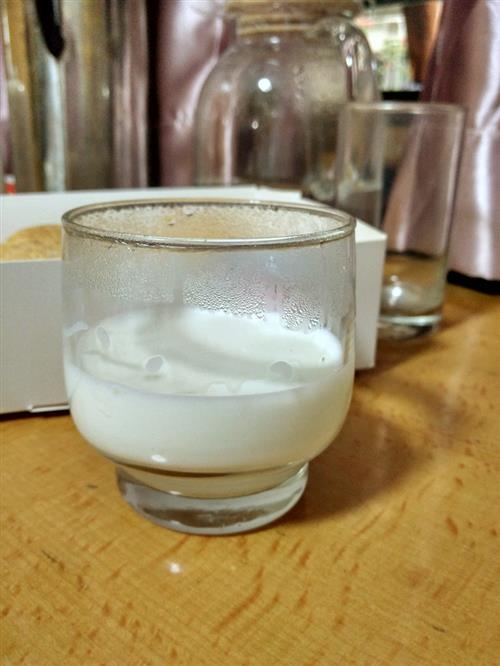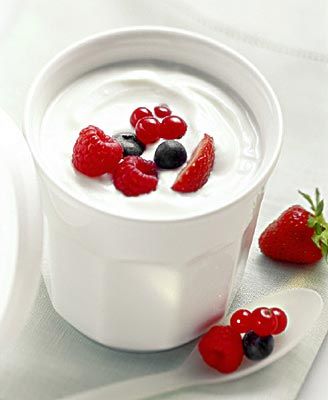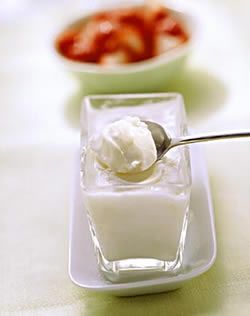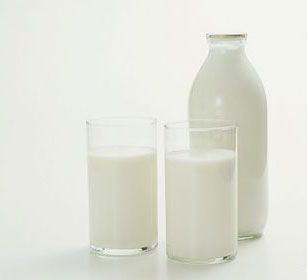With the improvement of modern people's concept of health, milk has become a necessity for daily health and nutrition. However, all kinds of rumors about milk affect people's diet and life. Let us take a look at the truth of the facts.

First, "the milk at room temperature is not as good as pasteurized milk?" The most essential difference between normal-temperature milk and pasteurized milk is the difference in sterilization methods. The former uses ultra-high temperature sterilization of milk, and it is filled with six-layer composite aseptic material, which requires no refrigeration and has a shelf life of several months. The latter is sterilized at 80°C for several seconds, requiring low temperature refrigeration and a shelf life of 1 to 7 days.
The pasteurized milk has no obvious difference from the nutrients of room temperature milk. Pasteurization does not reach very high temperatures. Maintaining a temperature of between 70°C and 80°C for a period of time can kill some of the harmful microbes in the milk in a low-temperature environment. It is possible to meet food safety standards. Ultra-high temperature sterilization can completely kill bacteria and microorganisms in milk, but the most important nutrients such as calcium and vitamin D in milk will not be affected.
Due to the short storage time and limited storage conditions, the price of pasteurized milk is slightly more expensive. Instead of going to the supermarket to buy UHT milk that is stored at room temperature is safe. In the international arena, many countries in continental Europe, including France, Belgium, Germany, Switzerland, etc., all have a large market share of room temperature milk.

Second, drink milk diarrhea because of quality problems?
Some people in the life of drinking milk can cause abdominal pain and diarrhea. The reasons for this phenomenon are complicated. Sometimes, because milk is not well preserved, consumers are advised to drink as soon as possible after opening a can of milk and not to be exposed to the air for too long. More often, it is caused by "lactose intolerance", which means that the human body lacks lactase that breaks down lactose. There is naturally some lactose in milk. Lactose cannot be absorbed through the gastrointestinal tract and it reaches the large intestine as it is. There are a variety of bacteria in the large intestine, some of which can metabolize lactose. This metabolism is a microbial fermentation process that produces large amounts of gas, such as hydrogen, carbon dioxide, and methane. The massive production of these gases can cause stomach cramps, nausea, bloating, acid reflux and flatulence.
About 50% of people in the world suffer from lactose intolerance, and the proportion of Asians is much higher than that of Europeans and Americans. The number and viability of lactase in most infants rises to peak after several days of birth, and lactose intolerance occurs in 10% of children aged 6 to 7 years. This phenomenon occurs in about 40% of people after age 30. People who are lactose intolerant can use yogurt instead, because 20% to 30% of the lactose in the yogurt has been degraded and is easily digested and absorbed. Low lactose milk can also be cited, such as the new breeding lane of Mengniu.

Third, drink milk and cause cancer?
The earliest claim that drinking milk can cause cancer comes from Dr. T. Colin Campbell's experiment with mice. In the experiment, Professor Campbell first used aflatoxin to induce cancer in mice, and then used a large amount of casein to promote the carcinogenic effect of aflatoxin. This first demonstrated that aflatoxin was the cause of cancer but not casein, followed by a large number of casein proteins and a purity of 100%. Daily milk consumption is far from reaching this order of magnitude. The professor himself also said in an interview with the "Life Times" that his research "doesn't mean that dairy products cause cancer."
IGF-1, which is also suspected of being a carcinogenic factor in milk, is called the insulin-like growth factor 1, and plays an important role in the control of human blood sugar, growth and development, and is a kind of protein peptide. To date, there is no evidence that IGF-1 is a carcinogenic factor.
Conversely, milk and dairy cheese contain a substance called CLA, which protects cells from invasive defense against carcinogenic substances and thus acts as an anti-cancer agent. Therefore, it is an undeniable rumors that milk causes cancer.

Fourth, milk adulteration?
Dairy adulteration has been one of the topics that consumers questioned in the dairy industry.
In fact, many domestic first-line dairy companies have made great efforts in product quality control. Introduce the world's most advanced automatic production line and inspection and inspection system, including sampling, filtration, separation, homogenization, sterilization, to canning, sealing, packaging, and packaging, all in the aseptic environment. The production process is seamlessly connected to ensure that there are no health hazards. And often there are only a few technicians in the field wearing sterile clothes and controlling the production line through the computer. This avoids any potential contamination of milk.
Of course, there are always some unscrupulous companies who are trying to fish in trouble, shoddy, and seek improper profits by adulteration in milk products, including some domestic small businesses and so-called foreign “big brandsâ€.
Many domestic large-scale enterprises have carried out measures such as the opening of the factory and the traceability of the production process, suggesting that consumers interact with each other, deepen their understanding, provide a basis for the selection of milk products, and clearly and safely consume.

Fifth, milk can drink or not?
The milk known as "white blood" has irreplaceable value to the human body.
Milk is rich in calcium, vitamin D, etc., including all the amino acids required for human growth and development. It is also rich in high amounts of protein, high-quality fats, and a large number of fat-soluble vitamins. The digestibility can be as high as 98%. Calcium and phosphorus in milk The proportion is more suitable, it is easy to digest and absorb, and it is one of the best calcium sources for human beings. Many elements of milk play an important role in the regulation of human growth and metabolism and are unmatched by other foods. Therefore, milk is also called "closest to perfect food."
The daily intake of milk per capita in China is about 50 grams, of which the value of domestic large cities is relatively high, and some impoverished areas are almost zero. China's nutritional diet pagoda recommended per capita intake of dairy products 800 grams. The serious shortage of dairy products directly leads to people's daily nutrition imbalances and even extreme lack.
Therefore, for the time being, milk is still a very important daily health drink for Chinese residents.

6. What about milk and many foods?
Many people believe that oxalic acid and citric acid contained in tea, coffee or chocolate react with calcium in milk, affecting calcium absorption and utilization. According to research, the large intake of oxalic acid may have an adverse effect on the human body, and the calcium in milk can be effectively combined with oxalic acid, which helps to excrete oxalic acid. Therefore, adding some milk properly when drinking tea is more conducive to health. However, from the point of view of calcium supplementation, it is better to avoid drinking milk with food containing oxalic acid and tannic acid.
Others say that milk and fruit juices are consumed together. The protein in the milk meets with some acid acids and vitamin C and other acidic substances in the juice, which will solidify into pieces and affect absorption. We all know that stomach acid is much more acidic than fruit juice. If milk does not absorb juice after it has precipitated, is it possible that milk is absorbed into the stomach?
For healthy people, the body's own metabolism and immunity can completely solve these small "gross". The diet is balanced, as long as it is not excessive, it will not cause harm.

VII. The more milk you drink, the less calcium you eat.
Some people say that proteins contain more elements such as sulfur and phosphorus, and the acidic substances produced after metabolism in the body predominate, which increases the amount of calcium excretion. Therefore, the more milk you drink, the more calcium you will lose.
The truth is that the metabolism of milk is mainly alkaline after metabolism. Because milk, although it also contains a lot of protein, brings sulfur, phosphorus and other acidic elements, but it is also rich in calcium, magnesium, potassium and other metal elements. As a result of the overall balance, the Alkaline element has a slight advantage. Since milk is not predominantly acidic, the amount of calcium is quite sufficient. There is no evidence that milk will promote the loss of calcium. The so-called theory that “the more calcium the milk is, the more calcium it lacks†is untenable.
275 milligrams of calcium can be obtained with a glass of milk, which is equivalent to 34% of the amount of calcium we need each day. When calcium and phosphorus are simultaneously absorbed in the ratio of 0.5 to 3, calcium is retained at the bone with the highest efficiency, and the ratio of calcium to phosphorus in the milk is 1.3. Therefore, milk is indeed a rare and excellent product in the human diet. Calcium source.

8. Are Chinese people unfit for drinking milk?
Some people in China will have diarrhea or flatulence after drinking milk. This condition is often called lactose intolerance, which is caused by a lack of lactase in the body.
Different Western and Chinese food habits, most Westerners have developed the habit of drinking milk for life, so Lactase does not appear faults in a lifetime; and Asians do not drink milk for life due to lifestyle habits, resulting in temporary Lactase Loss of sex can not break down lactose in milk, lactose into the colon after fermentation by bacteria, can cause bowel, abdominal pain, diarrhea and other symptoms, leading to the loss of some of the body's nutrients.
However, the retention of lactase is reversible, as long as a small amount of drinking (such as drinking only 100 grams each time), adhere to drink milk for three weeks, the general recovery of lactase, will no longer have a diarrhea after recovery.
Lactose intolerant consumers can also choose to drink yogurt. What can't be ignored is that after drinking for many years, the Chinese have actually begun to adapt to milk. Some people may have been uncomfortable drinking milk before, but now it is not.
JRT usb interface distance sensor board adds a USB port to a Laser Distance Sensor, inexpensive laser distance measurement sensors, allowing customers directly using GBeacon-2.3-Fx.exe software to control the rangefinder sensor. Usb laser distance sensors are the the most popular model devices, it works by measuring the phase of an visible-red laser beam that reflects on the target. Usually, customers would like to choose CH341SER.EXE version to test.
USB Laser Distance Sensor,Distance Sensor,Laser Distance Sensor,Distance Measurement Sensors
Chengdu JRT Meter Technology Co., Ltd , https://www.accuracysensor.com